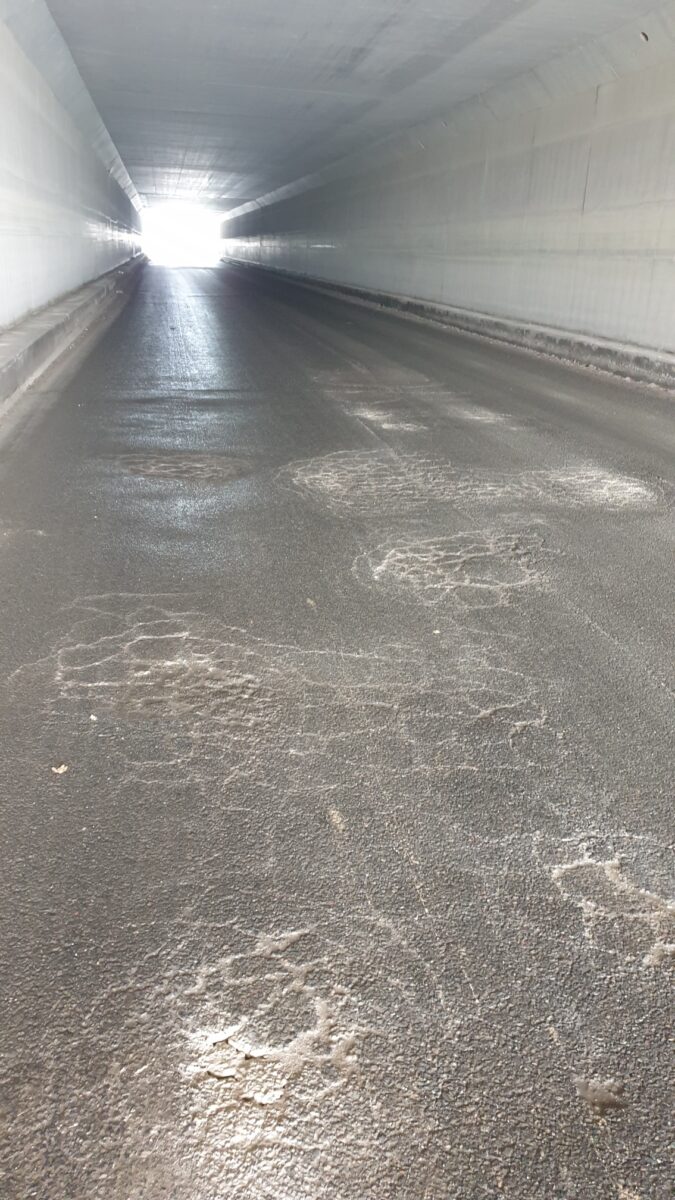There is a railway transport tunnel on the territory of the Port of Sillamäe, through which trucks drive to deliver goods to the port. The transport tunnel was built about 15 years ago in a limestone quarry, but its bottom has been filled with fill material of various fractions. The bottom of the tunnel is made of reinforced concrete approximately 50 centimeters thick, which is covered with two layers of asphalt concrete. Several holes have appeared in the asphalt at the bottom of the tunnel. Although these have been repaired, they keep reappearing. Now, a more thorough renovation of the tunnel bottom is planned.
TASK
The purpose of the GPR survey was to identify voids or areas of loose material under the reinforced concrete base of the tunnel that could cause deformation of the tunnel base.
SOLUTION
According to preliminary information, there was a concrete layer at the bottom of the tunnel with iron reinforcement at intervals of approximately 200 mm. As a result, it was decided to use two different solutions to ensure that the radar waves could pass through the reinforcement and to guarantee the best possible resolution and penetration depth. A high-resolution antenna array 3D GPR Raptor with 450 MHz antennas was used to obtain deeper layers and a complete overview. A 2D GPR PinPointR with an 800 MHz antenna was used to detect lower layers. As the data was collected in a tunnel, a Total Station was used for positioning. The collected data was processed and visualized using GPR Slice software.
RESULTS
The survey identified areas with higher moisture content than the surrounding area, as well as areas where the fill was looser, and these areas were mapped. The GPR survey confirmed that the deterioration of the asphalt pavement was caused by several problems in the base layers. As the GPR survey identified moisture in the road structure, voids and areas with looser fill material in several places and at depth, it is possible that the concrete layer under the asphalt layer is not stable. Due to the unstable base, the concrete layer moves under the combined effect of the weight of trucks and the freezing and thawing of moisture in winter. This, in turn, causes the asphalt layer to deteriorate.

Underground areas with looser soil and moister spots in the vertical section of the ground surface (radargram)



